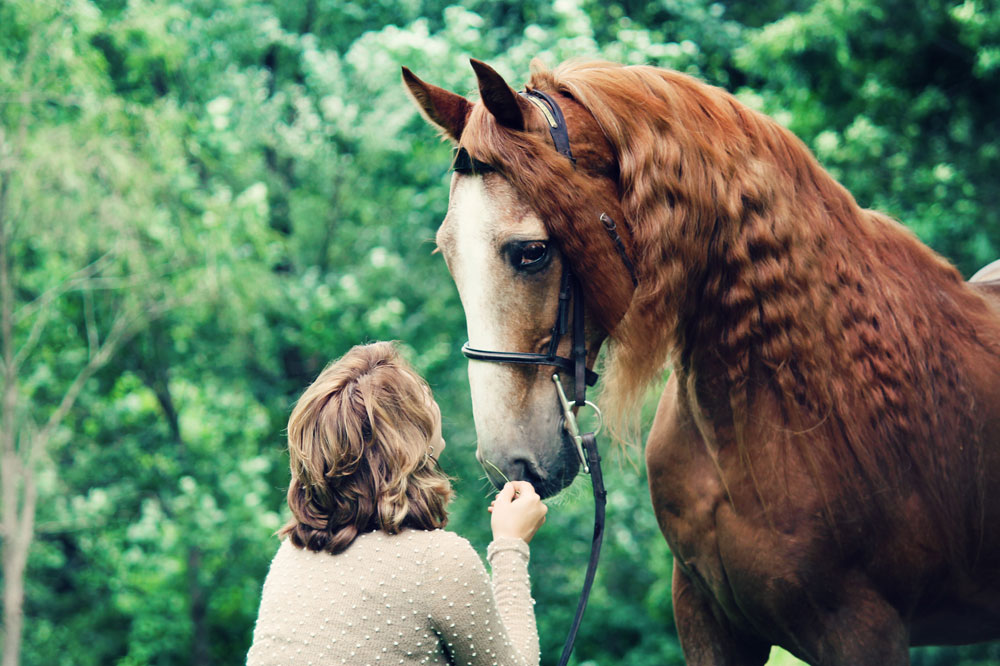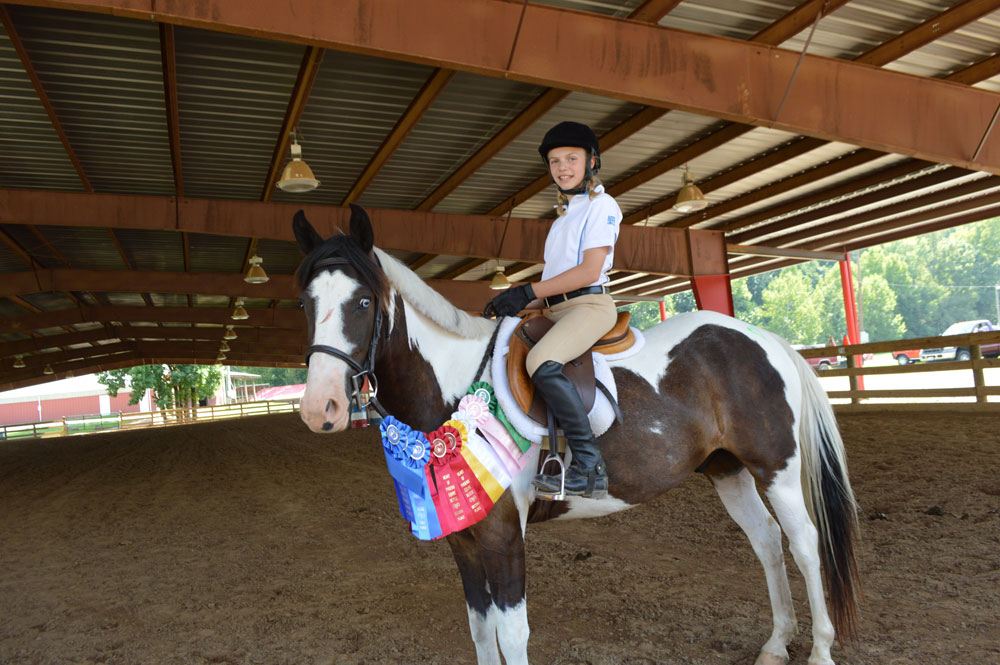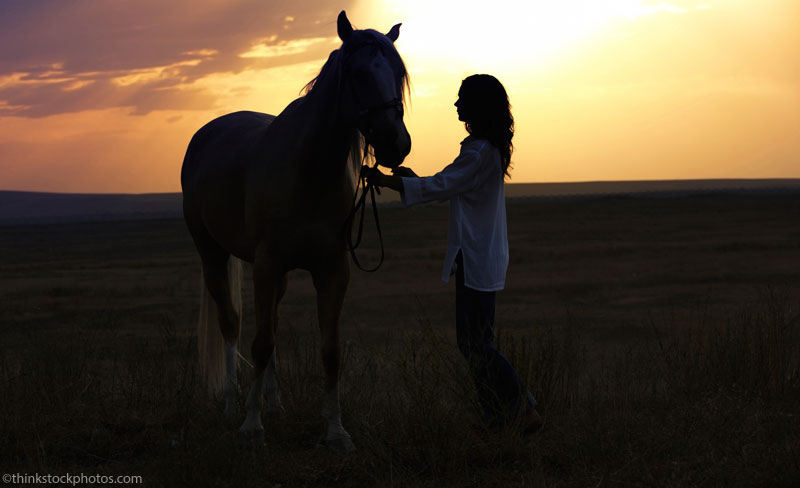Read how many equestrians are training the adoptable horse rather than acquire their animals through a private sale.
“I had done everything for everybody, and thought ‘It’s time for me to do something for me,’” says Kitts. “So I started taking riding lessons.”

It was during those lessons that Kitts met Reese, a Tennessee Walking Horse from the Heart of Phoenix Equine Rescue (HOP), who was being fostered at her lesson barn. Before long, she was spending more and more time with him.
“At first I would just sit in the stall with him and read,” she recalls. “Then I started riding him in [lessons]; pretty soon he was all I could talk about.”
Shortly thereafter, Kitts’ husband marked her birthday by initiating the HOP process to formally adopt Reese.
Adoption Option
In fact, Kitts is among the 80 percent of new horse owners that are women returning to equestrian sports or becoming involved in them for the first time. She also belongs to a growing group of prospective owners that are choosing to adopt rather than acquire their animals through a private sale.
But long before those adoptions take place, the horses involved undergo extensive training that begins the minute they arrive at adoption organizations, says Tinia Creamer, HOP founder and director. According to Creamer, most of the horses at HOP are part of law enforcement actions, including the investigations that HOP conducts on behalf or law enforcement agencies throughout the state of West Virginia.
Training begins the minute we get on the scene with the horses.
“We don’t know what we’re getting,” says Creamer. “For us, training begins the minute we get on the scene with the horses. We want to know to if they can be haltered, if we can pick up their feet and if they can load properly.”
After that, all the horses receive veterinary exams and rehabilitative care, then are turned over to a team of trainers for evaluation. Generally, horses spend between two and 12 months with the training team, which evaluates their basic skills and prepares the horses to participate in the disciplines for which they are best suited.
“Some will be hunter/jumpers, some will be pleasure horses, and some will be trail horses,” says Creamer. “In any case, we work with the horse to make it a model citizen.”
The Importance of Training
In many cases, training can account for the largest part of an adoption organization’s budget, says Erin Clemm Ochoa, chief executive officer for the Days End Farm Horse Rescue in Maryland. Like HOP, many horses arrive at Days End after they have become involved in law enforcement cases.
Like horses at other legitimate equine welfare organizations, all Days End horses are evaluated and go through a training regimen before they become eligible for adoption—even those that will never carry a rider.
According to Ochoa, a growing number of adopters own hobby or mini farms and have little time or are no longer physically able to ride. “Those people adopt just to have horses reside in their pastures,” she says.
Still others seek animal companionship. “We worked with one person who adopted a horse and got great pleasure out of teaching him tricks and just having him as a companion animal,” Ochoa recalls.
That’s why the organization’s training team spends a significant amount of time honing a horse’s ground skills. “After all, every horse will become a non-riding horse eventually,” Ochoa adds.
Finding the Resources
But while many long-established organizations maintain their own trainers to develop adoptable horses, this can be a budget-buster for smaller (though no less legitimate) adoption groups.
That’s why for the past two years, the Dumb Friends League Harmony Equine Center in Franktown, Colo., has been sharing its resources with other equine adoption organizations that are too small or too new to provide training themselves.
As part of the Dumb Friends League of Denver, the Harmony Equine Center takes in horses seized, removed or surrendered in law enforcement cases and trains them for placement into adoptive homes. Harmony trains prospective adopters, too, by providing three riding lessons intended to help Harmony staff make sure the fit between horse and rider is a good one.
Through a grant from the Watershed Animal Fund, the Harmony Equine Center also provides trainers to help other organizations assess horses in transition and then prepare them for placement in new adoptive homes.
“We asked ourselves how we could help other rescues that can’t afford the $1,500 or $2,000 to spend on training a horse,” says Duane Adams, Dumb Friends League vice president of operations. “So two years ago we began offering training for horses taken in by those rescues.”

The program allows smaller organizations to provide immediate rehabilitative care for horses taken in connection with law enforcement actions, and to assist even more horses in that kind of transition. After their rehabilitation, the horses are taken to the Harmony Equine Center where they receive training, are marketed through social and other media, and then adopted into suitable new homes. In all, Harmony currently works with more than 20 equine welfare organizations to ain in training the adoptable horse.
“This way [the smaller rehabilitation agencies] can do what they’re good at,” Adams says. “It’s how we can help other horse organizations be successful.”
Training Success
A year ago, the Oklahoma-based Nexus Equine, Inc. began taking in horses that have been surrendered by their owners or that the organization had purchased at auction, says Rita Hoch, Nexus president and founder. And while the organization does its own training and conducts its own adoption program, Nexus has also entered into a partnership with Harmony. Using the transport program between the two groups, some of Nexus’ horses are taken to the Harmony Equine Center for training and eventual adoption.

“It allows us to offer more options for horses in transition,” Hoch explains.
And there’s more. “We also have time to talk and exchange ideas about the next step in equine welfare,” says Hoch. “It’s a good partnership.”
Eventually, Hoch hopes other organizations will adopt Harmony’s model to create similar training centers in easily accessible locations throughout the U.S.
“It would be wonderful,” she says. “It would give all of us an opportunity to help more horses.”
Trainer and clinician Michael Lyons agrees.
Last year, Lyons served as judge for the Appalachian Trainers Face Off, sponsored by the Heart of Phoenix. During the competition, trainers had just 100 days to assess and polish the skills of horses about to enter the organization’s adoption program. The event was intended to show off the horses’ potential, as well as to highlight the importance of training the adoptable horse.
Training is especially important for horses in transition because many of them have been through a lot and need extra guidance.
“Training is especially important for [horses in transition] because [many of them] have been through a lot and need extra guidance,” says Lyons. “Fortunately, people who are adopting horses are on the knowledge hunt—attending clinics and classes—to learn more about having a partnership with their horses.”
It’s a notion that’s not lost on Diana Kitts. She and Reese continue to train, even when they don’t do it intentionally.
As Kitts recalls, the pair came upon an embankment during a trail ride. While the other horses proceeded, Reese hesitated before heading down the incline.
“He asked me the question, ‘Do you really want me to go on?’” Kitts recalls. “And I answered, ‘Yes, go on.’ It was a turning point for us. We trust each other; we’re bonded.”
This article originally about training the adoptable horse appeared in the April 2018 issue of Horse Illustrated magazine. Click here to subscribe!






